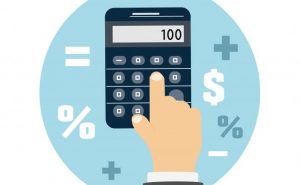Owning and operating a profitable dealership with
efficient cash flow all comes down to balancing that cash flow with current inventory. So how do you make sure you are balancing that money and inventory effectively? Knowing the answers to the following three floor plan finance formulas and balancing those numbers with current inventory month to month will help ensure your dealership is effectively managing your current inventory and cash flow. Take a look at these formulas, and see how your dealership lines up.
How much inventory should a dealer stock?
The answer to this question varies based on realistic, monthly desired sales numbers and turn times for units. For example, let’s say a dealer wanted to sell 60 units per month. Assuming the average turn time for vehicles on a dealer’s lot is 40 days, a dealer would turn their lot 9 times over the course of 12 months. This floor plan finance formula is essentially the following: monthly desired sales divided by how many times a lot is turned per year, multiplied by the number of months in a year.
| Monthly Desired Sales | 60 |
| Total Yearly Lot Turn (Assuming a 40 day average turn time) | ÷ 9 |
| Months in the Year | X 12 |
| Optimal Inventory Stocking Number | = 80 Units |
In this situation, the dealer would need to stock 80 units based on 60 desired sales per month and a 40 day average turn time.
Let’s try another example. This time, instead of an average lot turn time of 40 days, the dealer turns his lot only 6 times a year, or has an average lot turn time of 60 days. For simplicity, the same number of monthly desired sales will be used. The only change has been the total yearly lot turn.
| Monthly Desired Sales | 60 |
| Total Yearly Lot Turn (Assuming a 60 day average turn time) | ÷ 6 |
| Months in the Year | X 12 |
| Optimal Inventory Stocking Number | = 120 Units |
With an average 60 day lot turn, the dealer would need to stock 120 units.
How many sales should a dealer be making based on the units they have in stock
Knowing the target sales number a dealership should be working towards based on current inventory can help determine if a dealer is overstocked, or if the number of desired sales per month is realistic. Let’s say a dealer has 108 units in stock. Again, let’s assume a unit turn time of approximately 40 days, or a total lot turn over of 9 times over the course of 12 months. To figure out the number of desired sales, multiply the number of units in stock by 9, then divide that sum by the number of months in a year.
| Units in Stock | 108 |
| Total Yearly Lot Turn (Assuming a 40 day average turn time) | X 9 |
| Months in the Year | ÷ 12 |
| Optimal Number of Sales Per Month | = 81 Sales |
Based on the total number of units this particular dealer has in stock, they should be aiming to make 81 vehicle sales per month.
Let’s try this formula again with a 60 day average turn time and the same number of units in stock. To figure out the number of desired sales, multiply the number of units in stock by 6 (to account for the 60 day average turn time), then divide that sum by the number of months in a year.
| Units in Stock | 108 |
| Total Yearly Lot Turn (Assuming a 60 day average turn time) | X 6 |
| Months in the Year | ÷ 12 |
| Optimal Number of Sales Per Month | = 54 Sales |
With 108 units in current inventory and a 60 day average lot turn time, this dealer should aim to make 54 sales per month.
What is the unit holding cost per day?
Every day that a unit sits on a lot, it costs a dealer money. Figuring out the holding cost per day allows dealers to determine what units need to be turned quickly, what units are able to sit for a while, or what units a dealer might need to consider selling at auction. This floor plan finance formula will require a dealer to have a good handle on total dealership expenses and inventory for the entire month. First, a dealer would need to figure out their monthly holding cost. To figure this out, a dealer would subtract their monthly selling expenses from their total expenses for the month. A dealer’s monthly selling expenses are variable monthly expenses that are not charged to the customer. These monthly selling expenses include items such as commissions, advertising, salaries, demo expenses and fuel. Let’s say a dealer’s total monthly expenses are $148,485, and their monthly selling expenses are $57,437.
| Total Monthly Expenses | $148,485 |
| Monthly Selling Expenses | – $57,437 |
| Monthly Holding Cost | = $91,048 |
Dealers can determine the monthly holding cost per unit once the monthly holding cost is figured out. The monthly holding cost per unit is found by dividing the monthly holding cost by the number of retail units in stock for the month. Let’s say this month a dealer had 85 units in stock.
| Monthly Holding Cost | $91,048 |
| Units In Stock This Month | ÷ 85 Units |
| Monthly Holding Cost Per Unit | = $1071.15 |
Once the monthly holding cost per unit is figured out, it’s pretty simple to determine the holding cost per unit per day by dividing the monthly holding cost per unit by the number of selling days in a particular month. Selling days are the days that the dealership is open and available to make a sale. For example, let’s say that for a particular month there are 24 selling days available.
| Monthly Holding Cost Per Unit | $1071.15 |
| Selling Days Available | ÷ 24 Units |
| Holding Cost Per Unit Per Day | = $44.63 |
The holding cost per unit per day is a useful metric that can help a dealer keep their inventory balanced as well as determine how quickly a dealer might need to turn a unit.
Why do these formulas matter, and what does turn time have to do with anything?
These floor plan finance formulas incorporated with a dealer’s turn time can help to make or break a dealership’s profitability.
Let’s say a dealer makes a profit of $3000 per car sold. If this dealer’s holding cost per day per unit is $44.63 and their turn time to sell a car is 60 days, they will spend $2677 of their profit holding on to a non-selling car.
What if a competing dealer’s turn time is 40 days? If everything else stays the same—the dealer’s $3000 profit per car and the cost per day per unit remains $44.63—but only the turn time changes, the competing dealer will only spend $1785 out of $3000 to sell the same unit.
A longer turn time for inventory eats into a dealer’s cash flow. A general rule of thumb is that once a unit moves past the 60 day point dealers should start thinking about what might become frozen capital, or a non-adequate return on investment. While every individual dealer will have to decide on their optimal turn time, break even point and subsequent exit strategy for inventory that isn’t sold within a desirable time period.
In any case, the math doesn’t lie. Quicker turn times not only increase profitability, but also help to keep cash flowing.
How does your dealership line up?
Using these floor plan finance formulas, you can gain a better understanding of the monthly balance of your inventory and cash flow. Are the dealership’s sales goals realistic? Is the lot overstocked? Is the holding cost per unit per day reasonable? Working through these floor plan finance formulas periodically and monitoring these three metrics is essential to ensuring the overall balance of inventory and cash flow in your dealership.



